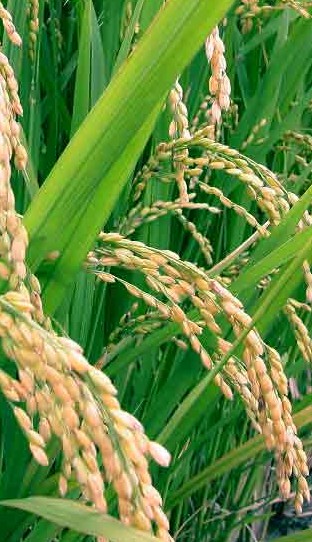 The rice mentioned by Shakespeare is probably Asian rice, Oryza sativa, a member of the true grass family, Poaceae. It has a jointed stem that can grow two to ten feet long and carries the long slender leaves. The small flowers are borne in arching to pendulous panicles that are twelve to twenty inches long. The edible part of the plant is the husked seed called a caryopsis or gain. Two subspecies are recognized: japonica or sinica that is short grained and sticky, and usually cultivated in dry fields; and indica, long-grained, not sticky, and grown submerged in tropical areas.
The rice mentioned by Shakespeare is probably Asian rice, Oryza sativa, a member of the true grass family, Poaceae. It has a jointed stem that can grow two to ten feet long and carries the long slender leaves. The small flowers are borne in arching to pendulous panicles that are twelve to twenty inches long. The edible part of the plant is the husked seed called a caryopsis or gain. Two subspecies are recognized: japonica or sinica that is short grained and sticky, and usually cultivated in dry fields; and indica, long-grained, not sticky, and grown submerged in tropical areas.
In The Winter’s Tale (act iv sc. 3, 38), the clown talks to himself as Autolycus, the vagabond peddler, watches.
Let me see; what am I to buy for our sheep shearing feast? Three pounds of sugar, five pound of Currants, Rice…What will this sister of mine do with Rice?
The domestication of rice occurred over eight thousand years ago in the Yangtse River valley of China. From there it spread to India and Africa, then to Europe and later North America. Rice was introduced into England by at least the fourteenth century and the sixteenth century herbalist, Gerard, grew it in his garden. England does not have the climate for productive rice growing and it was amore of a curiosity there. Shakespeare seems to have some knowledge of it.
The common name, rice, comes from the Old French word ris, taken from the Italian word, riso, derived from the Latin oriza, the name by which the Romans knew the grain. The Romans took the name from the Greek word for rice, oruza. The specific name, sativa, means cultivated, thus distinguishing it from undomesticated rice.